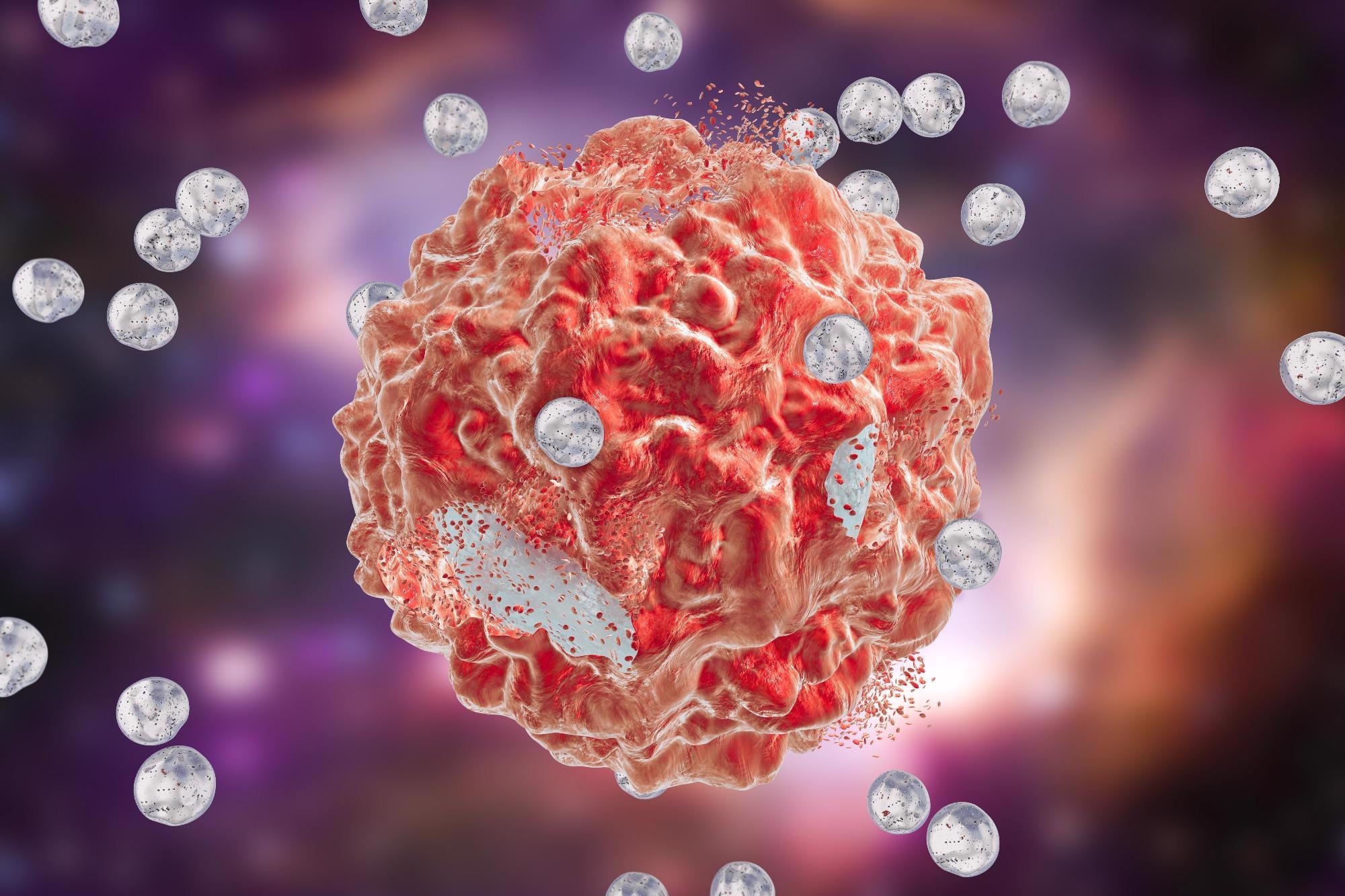AZoNano speaks with Dr. Amir Sheikhi from The Pennsylvania State University about his research into creating a new group of nanomaterials designed to capture chemotherapy drugs before they impact healthy tissue, amending a fault traditionally associated with conventional nanoparticles.
What inspired your research into the development of a new class of nanomaterial that can be engineered to capture chemotherapy drugs before they harm healthy tissue?
Cancer is one of the leading causes of death worldwide, affecting millions of people every year. Although chemotherapy remains one of the most common cancer treatments globally, the severe side effects of chemotherapy drugs have severe concerns for cancer patients.
In many cases, the chemotherapy can be localized to maximize the effects of the drug; however, the systemic drug circulation induces undesirable side effects.
To overcome the challenges associated with current drug capture materials, specifically the low removal capacity, nanoparticles with a large density of functional groups appear very promising. This inspired us to conduct this research and nanoengineer the most abundant biopolymer in the world, cellulose, for this purpose.

Image Credit: Shutterstock.com/ Kateryna Kon
Standard chemotherapies are efficient in killing cancer cells. What are the current downsides of current chemotherapies?
Current chemotherapy treatment has many downsides, including anemia, congestive heart failure, cardiomyopathy, seizures, myelosuppression and mucositis. Moreover, the unused drugs may still reach the circulation system and result in unpreventable damage to healthy tissues.
How can the off-target effects of cancer drugs be reduced?
To reduce the off-target effects of cancer drugs, eliminating their systemic circulation after localized chemotherapy is necessary.
Are there any platforms currently available to remove unwanted drugs from the blood, and if so, why are they ineffective?
Recently, a few platforms have been proposed to remove unwanted drugs, mainly doxorubicin (DOX), from blood, including DNA-coated magnetic nanoparticles, DNA-coated polyacrylate and block copolymers.
Although these strategies have shown some success in removing DOX from blood, their removal efficacy remains exceedingly low, for example, in the order of a few micrograms of DOX per milligram of adsorbent.
According to your research, your novel approach is able to capture unwanted drugs at a capacity more than 3,200% higher than any other platform. Can you give an overview of how you achieved this?
The emergence of hairy cellulose nanocrystals (HCNCs), decorated with highly functionalized disordered cellulose chains (hairs) at both ends that are synthesized via the controlled oxidation of cellulose fibers, has opened new opportunities for engineering nano-adsorbents with significantly higher removal capacities than other bio-based materials.
What role do nanocrystals play in this method of drug removal, and how are the nanocrystals produced?
The hairy nanocrystals are a highly-charged biocompatible adsorbent that removes off-target DOX from the blood via electrostatic interactions. The adsorbent is produced via controlled sequential oxidation reactions on cellulose fibrils using periodate and chlorite to preferentially solubilize and cleave the disordered regions of cellulose.
There has never been a nanoparticle-based super-capacity drug capture system until now. Why do you think this is?
Due to the complex blood composition, charged nanoparticles typically lose their functionality in blood as a result of ionic strength and protein-mediated aggregation via several mechanisms, such as charge screening and bridging. The HCNCs benefit from electrosteric stability.
What impact could the development of such a system have on future cancer treatment plans?
In terms of future cancer treatment plans, this technology has the potential to set the stage for next-generation, low-cost drug capture devices.
How does this novel method compare to conventional chemotherapies?
Developing materials that can specifically capture clinically relevant concentrations of chemotherapy drugs at physiological conditions without imposing adverse effects on cells is a particular challenge. The HCNCs immediately separate the drug from the physiological media, enabling the fast, high-efficiency and biocompatible detoxification of blood after localized chemotherapy.
How did you test the efficacy of the nanocrystals? What were the results of your findings?
We investigated the mechanism of drug removal via altering ionic strength, pH and protein content and quantified the drug removal efficacy. Our HCNCs were compared with conventional nanocelluloses (e.g., cellulose nanocrystals, CNC) to shed light on the fundamental advantages of HCNC polyanionic hairs.

Image Credit: Shutterstock.com/Green Apple
In addition, in vitro cytotoxicity and hemocompatibility of HCNCs were investigated. We found that biocompatible anionic hairy CNCs remove more than 6,000 μg of DOX, one of the most common chemotherapy drugs, per 1 mg of nanoparticles. This is more than a 3,200% improvement compared with some of the most recent adsorbents, such as DNA-based materials.
Did you come across any challenges during your research, and if so, how did you overcome them?
The beauty of research is that it is full of ups and downs. As a mentor, I always try to train my mentees to conduct experiments with maximum accuracy and repeatability.
One of the main challenges for me was to train students who had no background in this field. So, I conducted the experiments for them, and taught them how to analyze the data and troubleshoot the experiments. Persistence and perseverance were key to our success.
Hairy cellulose nanocrystals have far-reaching implications beyond the body. What are some of these implications?
As mentioned, hairy cellulose nanocrystals can have a huge effect on things beyond the limitations of the human body. These novel nanomaterials may have applications in transparent and superhydrophobic films, security packaging, ion scavengers, hydrogels, rheology modifiers, biomimetic mineralization and much more.
What are the next steps for your research?
Our next steps involve developing medical devices based on this biomaterial. This will hopefully take us one step closer to translating this technology from the lab bench to the bedside, giving it application in the world of nanomedicine.
About Dr. Amir Sheikhi
 Dr. Amir Sheikhi is an Assistant Professor of Chemical Engineering and Biomedical Engineering (by courtesy) at The Pennsylvania State University. He is the founding director of Bio-Soft Materials Laboratory (B-SMaL), wherein he conducts research on the micro- and nanoengineering of soft materials, such as hydrogels and colloidal nanosystems, for addressing some of the pressing challenges in healthcare and the environment.
Dr. Amir Sheikhi is an Assistant Professor of Chemical Engineering and Biomedical Engineering (by courtesy) at The Pennsylvania State University. He is the founding director of Bio-Soft Materials Laboratory (B-SMaL), wherein he conducts research on the micro- and nanoengineering of soft materials, such as hydrogels and colloidal nanosystems, for addressing some of the pressing challenges in healthcare and the environment.
Amir earned his Ph.D. in Chemical Engineering at McGill University and continued to complete two years of post-doctoral research on colloids and macromolecules in the Department of Chemistry, McGill University. Before joining Penn State, he was a post-doctoral fellow at Harvard Medical School and then at The University of California, Los Angeles (UCLA) to conduct research on Engineering in Medicine and Bioengineering.
Amir’s research has been featured in more than 60 peer-reviewed publications, 40+ seminars, and 12 reports of invention/patent applications with recognition by over 40 news media outlets. Amir is the recipient of several major awards and recognitions, including The American Institute of Chemical Engineers (AIChE) 35 Under 35, The 2022 American Chemical Society (ACS) Unilever Award for Outstanding Young Investigator in Colloid & Surfactant Science, The John C. Chen Young Professional Leadership Scholarship, UNIFOR Global Research Fellowship, The Marcus Wallenberg Delegate Award, CIHR postdoctoral fellowship, and FRQNT postdoctoral fellowship. Recently, Amir was named as one of the 9 emerging leaders in Chemical and Biomedical Engineering worldwide, received a National Institutes of Health (NIH) R01 grant, and was featured on the cover of the Inaugural “Futures” Issue of Bioengineering & Translational Medicine (BioTM) journal. Amir is also an editorial borad member of leading journals in the field, including Biomaterials and Bioactive Materials, and has recently been appointed as an Associate Editor of BioTM.
Disclaimer: The views expressed here are those of the interviewee and do not necessarily represent the views of AZoM.com Limited (T/A) AZoNetwork, the owner and operator of this website. This disclaimer forms part of the Terms and Conditions of use of this website.